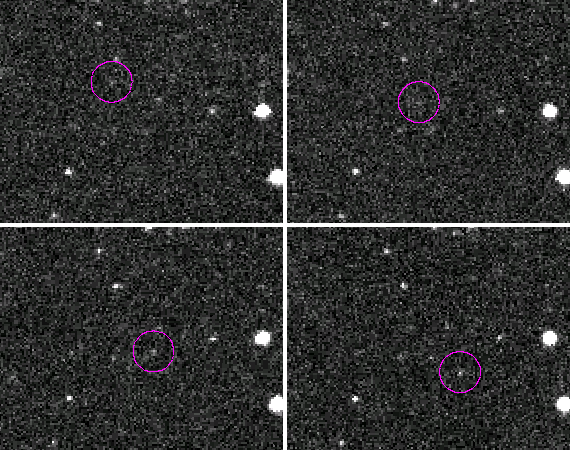Video above: A van sized chunk of primordial space rock rips into our atmosphere on April the 22nd. Courtesy of Júlio Cézar Soares.
A couple of weeks ago a 70 ton meteoroid - about the size of a minivan - blew up spectacularly in Earths atmosphere. Packed quite a punch in fact, around 5 kilotons. Meteorite tracking networks [1] (More on them soon!) used infrasonic sensors to pin point the rough location of the blast at 37.6N, 120.5W.
Image right: Fragments of the Sutters Mill Meteorite. Image courtesy of Greg Hupe.
It's being called the Sutter’s Mill Meteorite. Meteorite hunters have been able to recover fragments of it, and we now know that it was a CM class carbonaceous chondrite [2]. That's one of the really rare and groovy types that contain ancient material, show signs of having been altered by liquid water on their worlds of origin, and contain bio-molecules like amino acids.
NASA and SETI are looking for bits of it using a zeppelin! Follow this link [3] for news report.
The really strange thing is that things this size hit Earth on a regular basis, but often come in over unpopulated areas and don't get seen. Earlier this year 2012 BX34 [4], a lorry sized asteroid, 'near missed' Earth - it was too small to have done any world ending if it hit, and in any case 'near miss' in this case means about ten times the distance from the Earth to the moon.
These events highlight a very interesting point: Fragments of lost worlds buzz by Earth all the time!
Image left: 2012 BX34 seen in January. Image courtesy of Alex Gibbs, Catalina Sky Survey/University of Arizona
The chart below, courtesy of the brilliant space weather.com [5], has bought home to me just how freaking often some piece of space debris passes by Earth. This is just the encounters for the last half of January! Only one was big enough to be scary, and it passed us by a loooong way off. But it just goes to show that there are a lot of objects out there. Bear in mind I'm convinced we can find clues to the big questions of the universe in even the tiniest bit of space debris.....
Recent Earth-asteroid encounters:
Asteroid 'name'
|
Date(UT)
|
Miss Distance
|
Size
|
2012 BZ13
|
Jan 18
|
9.1 LD
|
29 m
|
2012 BL14
|
Jan 20
|
1.2 LD
|
10 m
|
2012 BV1
|
Jan 20
|
0.8 LD
|
3 m
|
2012 BS1
|
Jan 23
|
3.1 LD
|
10 m
|
2012 BY1
|
Jan 24
|
2 LD
|
31 m
|
1991 VK
|
Jan 25
|
25.3 LD
|
1.9 km
|
2012 BW13
|
Jan 26
|
1.7 LD
|
16 m
|
2012 BD14
|
Jan 30
|
5.8 LD
|
19 m
|
Notes: LD means "Lunar Distance." 1 LD = 384,401 km, the distance between Earth and the Moon. 1 LD also equals 0.00256 AU.
Image above: The simulated path of a mini-moon, following a temporary, chaotic orbit about Earth. Inset: A larger asteroid, showcasing the rough surface of small objects. The simulations suggest mini-moons could be a common occurrence, and these little critters could orbit Earth for a year or more. Image courtesy of K.Teramura.
They are only weakly bound, and follow chaotic, temporary, orbits, but the simulations the teams have run show that there will be at least one object a meter across or bigger orbiting Earth at any one time.
Now for an asteroid hugger like me that is absolutely amazing: A sample return mission to such an asteroid could be done for next to nothing in space exploration terms.
OK, house sized bits of rock whizzing over our heads on an almost daily basis isn't any thing to get excited about......
......um actually, at the very least, I'd rate it a 6.5 on my list of things that make go 'huh?'. Seriously - house sized rocks are flying over my head right now, and this happens every day?
List of links:
[1]http://www.wired.co.uk/news/archive/2011-03/16/nasa-fireball-network
[2]http://www.meteoris.de/class/CM-Group.html
[3]http://youtu.be/NlcGLWtjdeo
[4]http://digitaljournal.com/article/318574
[5]http://www.spaceweather.com/
[6]http://en.wikipedia.org/wiki/3753_Cruithne
[7]http://www.helsinki.fi/university/
[8]http://www.uhm.hawaii.edu
[9]http://www.obspm.fr/presentation.en.shtml


No comments:
Post a Comment